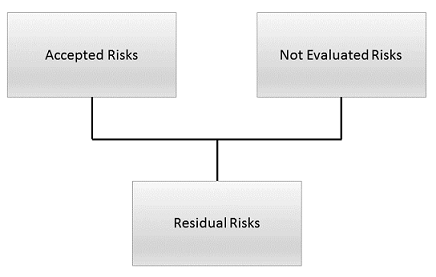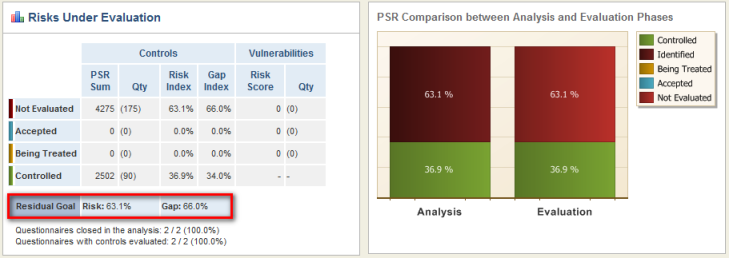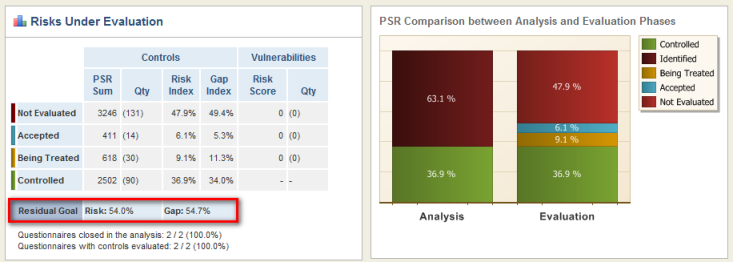
The accepted risks and those that have not yet been evaluated comprise the residual risk associated with the project in question (see figure below).

In a real risk management process in an organization, what is expected is that the risks sent to treatment are in fact treated. That is, there is the aim of being able to reduce the residual risk as much as possible. Thus, the Residual Goal is an ideal to be reached, a desired value for the residual risk once the treatment is over.
To calculate this indicator, it is assumed that all the risks sent to treatment will in fact be treated (all treatment events created in this project will be closed in the Workflow module). Thus, the Residual Goal represents the sum of the Risk Index and the Gap Index of the accepted and not evaluated risks, already subtracting the risks associated with the controls undergoing treatment, as if these had already been treated.
As a portion of the Residual Goal is comprised of risks that have not yet been evaluated, it’s worth noting that this portion will decrease as risks are evaluated and sent to treatment, and thus the Residual Goal to be achieved will also decrease. For example, the Residual Goal of the Risk Index in the figure below was 63.1% and the Gap Index was 66.0%. After risks were sent to treatment, the Residual Goal of the Risk Index decreased to 54.0% and the Gap Index to 54.7% (see second figure below).

